WordPress, while incredibly popular and versatile, is not immune to vulnerabilities. A key aspect of maintaining a secure, high-performing website is ensuring that the core WordPress software and all installed plugins are up-to-date. Ignoring these updates can lead to a host of problems that can seriously impact your website performance, user experience and online presence.
Security Risks
Perhaps the most significant danger of outdated WordPress software and plugins is the increased risk of security breaches. Hackers constantly scan the web for vulnerable websites, and outdated software is like an open invitation.
- Malware Infections: Outdated plugins or core can contain vulnerabilities that malicious actors exploit to inject malware into your website. This can lead to data theft, website defacement, and damage to your reputation.
- Data Breaches: Sensitive information about your visitors or your business can be compromised if hackers gain access to your website. This can result in significant financial loss and legal repercussions.
- DDoS Attacks: Outdated software can make your website more susceptible to Distributed Denial of Service (DDoS) attacks, which can render your site inaccessible to visitors.
Performance Issues
Outdated WordPress can also negatively impact your website’s performance.
- Slow Load Times: Older versions of WordPress and plugins may be less efficient, leading to slower page loading speeds. This can frustrate visitors and harm your search engine rankings.
- Compatibility Problems: Outdated software can cause conflicts with other website components, leading to errors, crashes, and unpredictable behaviour.
- Lack of new features: By not updating, you miss out on new functionalities, improvements, and bug fixes that could enhance your website’s performance and user experience
SEO Implications
Search engines like Google prioritise websites that are secure, fast, and user-friendly. An outdated WordPress site can suffer from lower search rankings due to:
- Poor User Experience: Slow loading times and frequent web errors can deter visitors and increase bounce rates.
- Security Issues: Search engines may penalise websites with known security vulnerabilities.
- Broken Links and Missing Content: Compatibility issues can lead to broken links and missing content, which can negatively impact your SEO.
Updates: The Unexpected Challenge
One of the most frustrating aspects of managing a WordPress website is the unpredictable nature of updates. WordPress core and plugin updates can be released at any time without warning, making it challenging to maintain a consistent update schedule. This means that your website is constantly at risk if not monitored regularly.
It’s crucial to understand that even with the best intentions, it’s impossible to predict how a plugin or core update might affect your website. Thorough testing after every update is essential to identify and resolve any potential issues.
Navigating the Update Process
Updating your WordPress core and plugins is essential for maintaining a secure and high-performing website, but it’s a process that requires careful attention and expertise.
The Importance of a Staging Environment
Before making any changes to your live website, it’s crucial to create a staging environment. This is a duplicate of your live site where you can test updates and modifications without affecting your public-facing website.
The Update Process
- Create a Staging Environment: Duplicate your live site to create a staging area for testing.
- Update Plugins: Carefully update plugins on your staging site. Prioritise essential plugins and update them one at a time to isolate any potential issues.
- Thorough Testing: Rigorously test your staging site after each update. Check all pages, forms, and functionalities to ensure everything works as expected.
- Client Approval: Obtain client approval for the updated staging site before proceeding to the live site.
- Migrate to Live Site: Once testing is complete and approved, carefully transfer the updated files and database to your live site.
Potential Challenges
While the process outlined above is straightforward, it’s essential to be aware of potential challenges. Major updates can sometimes require significant changes to your website’s structure. This might involve rebuilding or restructuring pages to comply with the updated plugin or core version. Such modifications would need to be scoped and planned separately.
The Benefits of a Web Maintenance Service
Managing a website can be time-consuming and complex, especially when it comes to updates and maintenance. A professional web maintenance service offers numerous advantages:
- Time Savings: Free up your time to focus on core business activities by delegating website maintenance tasks.
- Expertise: Benefit from the knowledge and experience of professionals who stay updated on the latest WordPress trends and best practices.
- Security: Protect your website from vulnerabilities with regular security checks and updates.
- Performance Optimisation: Ensure your website loads quickly and functions efficiently.
- Peace of Mind: Have confidence knowing your website is in capable hands and is always up-to-date.
- Proactive Issue Resolution: Identify and address potential problems before they escalate into major issues.
- Improved SEO: Benefit from ongoing optimisation efforts to enhance your search engine rankings.
By partnering with a web maintenance service like TheHypeSociety, you can enjoy the peace of mind that comes with a well-maintained website, allowing you to focus on growing your business.
Don’t gamble with your website’s security and performance. Contact TheHypeSociety today to learn more about our web maintenance services.























































